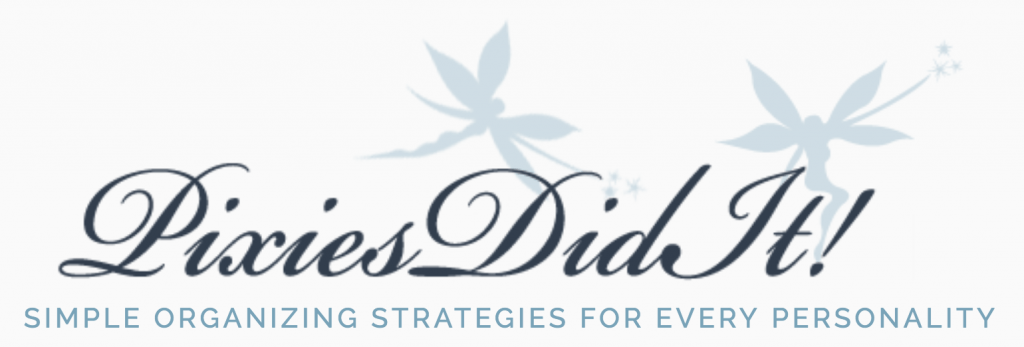Retailers Design Decluttering to Be Hard

Half of humanity finds it difficult to declutter. It’s not just one personality type either. Different folks have different decluttering hurdles. It’s why every organizer has a declutter method and there are bestsellers on the subject. Marie Kondo’s method is to dump items that don’t “spark joy.” Oprah’s organizing guru, Peter Walsh, has a “Let It Go” method to guide people on how to spot “malignant” clutter from worthy items.
One would assume shedding malignant clutter that doesn’t spark joy would be as instinctual as going to the bathroom when waking up in the morning. But it’s not. The National Soap and Detergent Association claims a 2019 study found getting rid of household junk would eliminate 40 percent of household work in the average home. Yet the junk remains. Organizers give a plethora of reasons for why this is so. But none of them get to the core of the problem.
The publishing world produces a steady stream of organizing books that teach people how to throw out possessions, a concept most two-year-olds grasp, because nobody has ever truly answered the “why” question: Why is decluttering is so often a monstrous task? But there is an answer. It lies in consumer psychology, personality type, and retailers.
Why Decluttering Is Difficult
While difficulty with decluttering is a complex problem, the root goes back to the activity of acquiring things in the first place: consumption. When consumers interact with a store in person or online, their activity and decisions don’t happen in a vacuum. There are a lot of people working hard to figure out how to get people to buy things, a.k.a. future clutter.
Consumer psychology is the social science marketers use to figure out how to better separate people from their money in exchange for goods. They try to address the consumer’s core needs: control, pursuit of happiness, identity, and social belonging. According to social psychologist Erica Carranza, Ph.D., vice president of consumer psychology at Chadwick Martin Bailey in a Forbes 2020 article, consumer behavior is about the marriage between motivation and ability (i.e., control). Next, retailers try to spark positive emotions (e.g., pursuit of happiness).
Carranza says that people like to maximize positive emotions (e.g., joy) and minimize negative ones (e.g., guilt). Underlying this all is the degree to which these emotions are positive or negative and how much physical energy is associated with each. The sweet spot for retailers tends to be when purchases create positive consumer feelings with lots of energy behind them. This is when people are the most likely to buy.
The other two components of consumer behavior are personal identity, which is tied up in self-esteem, and then social belonging. Charity isn’t the only reason TOMS shoes used to donate a pair of shoes for every pair a customer bought and now dedicate a third of profits to Grassroots Good. Most consumers enjoy having a charitable self-image and a feeling of being a part of a like-minded group.
“People are thirty-times more likely to try a brand if they expect it to deliver strong emotional, identity, social, or functional benefits,” Carranza says. Retailers build marketing strategies around giving consumers just this notion so that they’re 30 times more likely to buy their product. Ironically, the moment when a consumer feels most in control—purchasing—is just the end game of a process controlled by the retailer.
Consumer Psychology Works Against Decluttering
The act of decluttering is the antonym to retailer-guided purchasing. It’s a marketer’s nightmare filled to the brim with negative emotions like guilt, shame, and fear. When a person buys something because it elicited a positive feeling, improved self-esteem, and increased social belonging, then it’s easy to see why it might be difficult down the line to toss those happy vibes into the trash like yesterday’s news.
Decluttering is the opposite of the 30× rule. It is rejecting the emotional, identity, social, or functional benefits that at one point were the very reasons behind a purchase mixed with a dollop of buyer’s remorse thrown in for good measure. The act of decluttering an attic full of past purchases is therefore a long exercise of bad feelings and fighting against that 30× rule. It’s why so many people — with various personality types — avoid decluttering or purchase books instructing them how to do it.
On top of that is individuals’ reactions to these feelings and emotions. Some personality types based in logic have an easier time letting go of useless or even useless, sentimental objects. In PixieTypes these are Classic Structure, Fun Structure, and Smart. The types that tend to make more subjective decisions — decisions more often ruled by emotions than those of their more logic dominated brethren — naturally have a tougher barrier to decluttering. These are Classic Freedom, Fun Freedom & Organic. These PixieTypes always tend to have more stuff because of their tendency to let emotion cloud the benefits of decluttering more.
Seize the Reins
The trick to decluttering—whether it’s a bedroom closet or a stuffed attic—is realizing that, while it is indeed an exercise in misery, it’s also an act of taking back control from retailers. Simple recognizing how hard a retailer worked to have consumers form an attachment to an object, makes it a little easier to let go of it.
Those PixieTypes with more subjective based decision making declutter more stuff when they do this chore with a friend or an organizer to push them to get rid of things. But most of all, regardless of your type, remember that there is, oddly, contentment to be found in emptiness or at least in an attic where a person can easily access things that do spark joy! Plus, there’s also the National Soap and Detergent Association’s promise of less housework.
References
Danziger, P. N. (2020). Consumer Psychology Is the Only Constant in a Changing Retail Market. Jersey City, NJ: Forbes.
